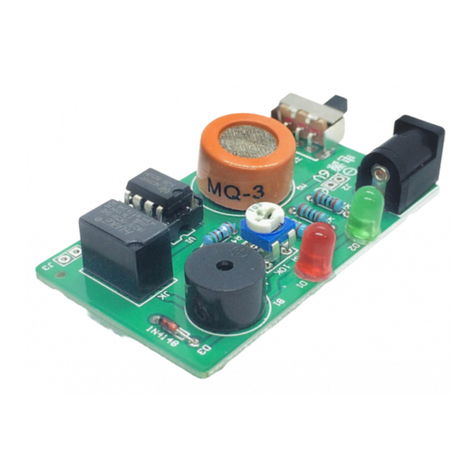5
b) The soldering iron temperature depends on the type of solder used.
If you are using a typical 60/40 lead solder, depending on the thickness
the temperature should be set anywhere between 370 to 500 °F (187 to
260 °C). If you are using a lead-free solder, increase above temperatures
by 40 to 70 °F (5 to 20 °C).
*ATTENTION* HIGHER TEMPERATURES WILL DAMAGE THE COMPONENTS ALONG
WITH THE CIRCUIT BOARD.
*ATTENTION*DO NOT TOUCH THE SOLDERING IRON WHEN IT IS HOT.
c) It is recommended that you clean the board with a fine brush, isopropyl
alcohol and lint-free cloth to get rid of any pre-existing residue, glue or dirt.
This way the solder will create a better joint with the copper surface.
d) Have your flush cutter, needle nose plier or tweezers handy.
e) Having a roll of paper tape helps you to keep the components in place
when soldering on the bottom side of the board.
f) Have a rosin flux pen or paste handy. Adding flux to the pads before
soldering the components makes the wetting process easier by letting the
melted solder to flow better on the pad and create a better joint.
*ATTENTION* SOLDERING SHOULD BE DONE IN A VENTILATED AREA. BREATHING SOLDER
FUMES WILL HARM YOU.
g) Always cut the excess leads with a flush cutter once a component is
soldered on the PCB. At least 1mm of the lead should stick out from the
solder joints.



























